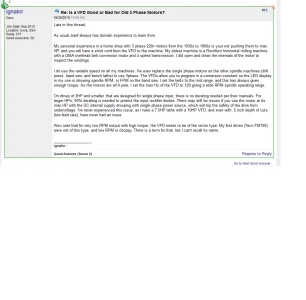Ironman
Ultra Member
I just ordered a VFD from Vevor, and as it puts out max 36 amp, I am going to feed it and it's output with #10. Yes, I know. But I am powering a 5hp 3ph motor from it so it would only see those amps in a locked rotor situation.
My lathe motor is intermittently telling the breaker panel that it's getting sick so it's time to replace it
My lathe motor is intermittently telling the breaker panel that it's getting sick so it's time to replace it

